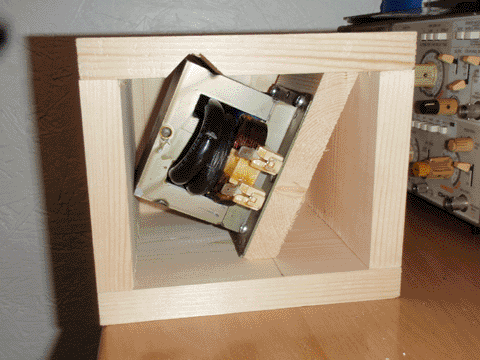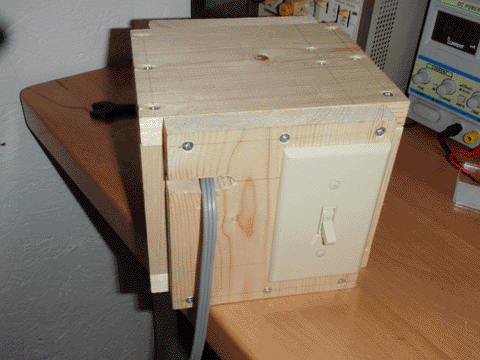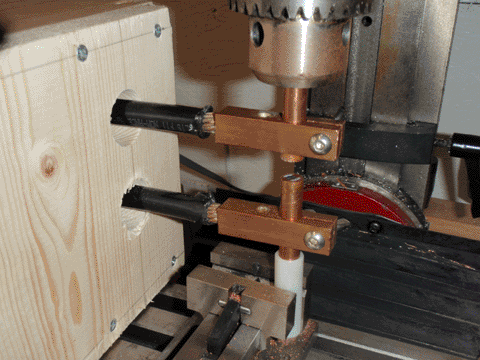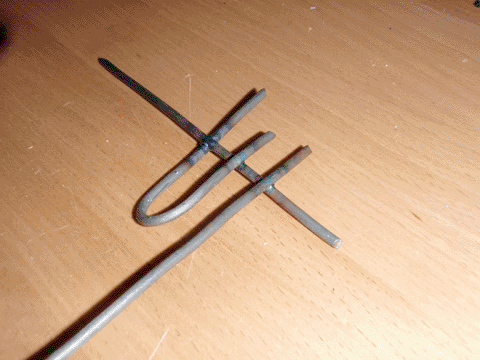



I will need a spot welder for a future project, so I decided to make one from a microwave oven transformer. I first broke the welds on the transformer and removed the high voltage winding, and replaced it with one and a half turns of 0 AWG wire. This produces 1.8 volts AC, and a large amount of available current. I then machined two pinch clamps out of 1/2 inch copper square rod, and silver soldered them to the low voltage winding. Next, I cut two lengths of 3/8 inch copper rod for the electrodes and machined an insulator out of nylon for the lower electrode. Finally I built a wooden housing with a power cord and a switch. The transformer is mounted on an angle due to the two ends of the low voltage winding being offset.
To operate the spot welder, the electrodes are mounted on a milling machine or drill press, with the insulated lower electrode held in a vise, and the upper electrode mounted in a chuck or collet. The electrode spacing may be adjusted by loosening the wing nuts on the pinch clamps. Due to the stiffness of the low voltage winding, the welder has a very limited range of motion; an improved design would use braided copper straps to connect the electrodes to the transfomer.
The welder performs very well for steel rod up to around 3/16 inch in diameter; test welds on 12 AWG steel wire can be seen above. The flat electrodes perform poorly on sheet metal, but still succeeded in joining two washers together. Pointed electrodes could be easily made to overcome this. Some form of power adjustment is needed, however, as the welder burns through smaller diameter wire instantly. I will eventually buy a variac for this and other functions.